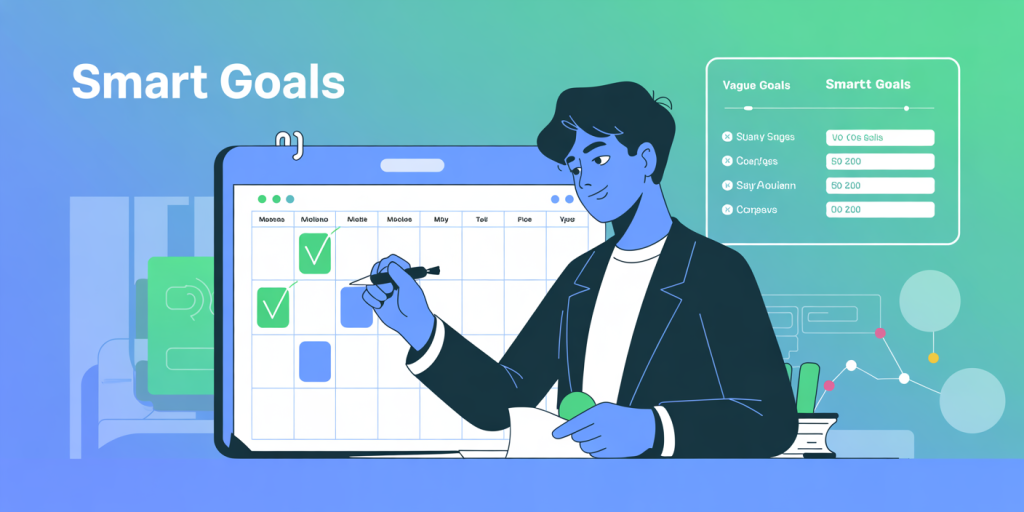How to Create a Personal Development Plan for Your Career
In today’s fast-changing work environment, having a structured personal development plan (PDP) is crucial for career growth. Whether you’re an early-career professional or an experienced employee aiming for leadership roles, a well-crafted plan serves as a roadmap to sharpen your skills, enhance your strengths, and overcome weaknesses. Various studies show that employees who engage in continuous learning and personal development are 15% more productive compared to those who don’t (LinkedIn Learning Report, 2023). That statistic alone highlights the value of taking charge of your career growth deliberately.
Creating a personal development plan involves thoughtful self-assessment, goal-setting, actionable steps, and regular evaluation. This article explores practical steps to build an effective PDP, incorporates real-life examples of professionals who succeeded through personal development, and provides data-driven insights to optimize your career trajectory.
Understanding Your Starting Point: Self-Assessment and Skills Inventory
Before you can plan where to go, you need to know where you stand. Conducting a thorough self-assessment helps you identify key skills, knowledge gaps, and areas of improvement directly relevant to your career goals. Utilize tools such as SWOT analysis (strengths, weaknesses, opportunities, threats) to evaluate performance objectively.

Consider Sarah, a mid-level marketing specialist who wanted to transition into a digital marketing manager role. By taking a skills inventory, she realized her content creation and analytics skills were strong, but she lacked knowledge in paid advertising and SEO strategies. This honest assessment gave Sarah clarity on which specific competencies to prioritize in her plan.
To perform an effective skills inventory, list your current proficiencies along with proficiency levels (basic, intermediate, advanced). Incorporate feedback from supervisors or colleagues to mitigate bias. Online platforms like Skillsoft or LinkedIn Skills Assessments offer useful benchmarks for skills evaluation. According to a 2022 Gallup survey, 85% of employees who received consistent skill development feedback showed improved performance, emphasizing the vital role of self-awareness in career advancement.
Setting SMART Career Goals for Focused Growth
Once your skillset and areas for growth are defined, it’s time to set clear, focused career goals. The SMART framework—Specific, Measurable, Achievable, Relevant, Time-bound—ensures goals are practical and trackable. Vague goals like “get better at communication” are difficult to pursue effectively, whereas “attend two public speaking workshops and deliver three presentations at work within six months” provides an actionable path.

For example, James, an IT specialist, wanted to move into cybersecurity. Instead of a broad goal, he set SMART objectives: complete a Certified Information Systems Security Professional (CISSP) certification within a year, practice network security concepts weekly, and participate in a security audit project by Q3. Such goals gave James direction and accountability.
A comparative table below showcases the difference between vague versus SMART goals in career development contexts:
| Goal Type | Example | Clarity | Measurability | Time Frame |
|---|---|---|---|---|
| Vague Goal | Improve leadership skills | Low | No | None |
| SMART Goal | Complete a leadership course and lead a team project by December 2024 | High | Yes | Set |
By formulating SMART goals aligned with your overall career aspirations, you increase motivation and reduce the chance of drifting off course.
Designing an Action Plan: Tools, Resources, and Techniques
Goal setting is only part of the journey; you must create a detailed action plan that outlines steps, resources needed, and timelines. Break down goals into smaller milestones, and specify the resources—whether online courses, mentorship, networking, or job rotation opportunities—to achieve each.
Take Emma, a software engineer targeting a senior developer position. Her action plan included: Enroll in an advanced coding bootcamp (3 months) Join a specialized developer group for knowledge sharing (ongoing) Request to lead a small project (within 6 months) Improve public speaking through local tech meetups (within 4 months)
By organizing milestones this way, Emma monitored progress and stayed engaged. Research from the Harvard Business Review indicates employees who incorporate regular progress tracking in development plans are 20% more likely to reach their objectives.
Modern technology offers numerous platforms to track development plans effectively. For example, productivity apps like Trello or Asana can help organize milestones and deadlines visually. Additionally, professional mentoring programs or peer groups provide vital feedback and motivation.
Overcoming Challenges: Maintaining Motivation and Adaptability
Creating a personal development plan is only valuable if sustained over time. Many professionals face challenges such as lack of time, motivation dips, or unexpected changes in priorities. Strategies to overcome these obstacles include setting realistic milestones, scheduling consistent review points, and maintaining flexibility to adapt plans when necessary.
Consider the case of Raj, a project manager who initially committed to improving his data analytics skills but found it hard to balance learning with his demanding workload. He adapted by dedicating 20 minutes daily to online tutorials and sought support from a data-savvy colleague. This incremental approach helped maintain momentum without burnout.
Motivation is closely linked with clear feedback and measurable progress. Setting up monthly check-ins—self or via a mentor—can help keep you accountable. The 2023 Employee Motivation Report reveals that employees who review personal development plans monthly report 30% higher engagement at work.
At times, career shifts or market trends may necessitate revisiting your objectives. For instance, professionals in emerging fields like AI or renewable energy might need to pivot swiftly as technology or regulations evolve. An adaptable plan allows for course correction without loss of momentum.
Leveraging Feedback and Continuous Evaluation
Personal development is a cyclical process. After implementation, continuous evaluation and adjustment based on feedback are key for sustained growth. Seek feedback regularly not only from managers but also peers, mentors, or clients to gain diverse perspectives.
Real-world example: Olivia, a finance analyst, introduced quarterly feedback sessions explicitly focused on skill progress with her supervisor. This practice revealed improvement areas she hadn’t considered, such as client communication skills, enriching her development plan considerably.
Quantitative measures can also help evaluate success. For instance, tracking completed certifications, projects led, or performance metrics before and after plan implementation are useful indicators. According to a McKinsey study, teams that integrate formal feedback loops in employee development plans experience productivity boosts of up to 25%.
Incorporating feedback, documenting lessons learned, and refining goals ensure your plan remains dynamic and relevant, supporting accelerated career progression.
Future Perspectives: Evolving Your Personal Development Plan for Career Sustainability
The workforce landscape is undergoing unprecedented transformation driven by automation, digitization, and changing employee expectations. A static career plan risks obsolescence amid such flux. Forward-thinking professionals leverage personal development plans not just for immediate growth but for long-term career sustainability.
According to the World Economic Forum’s Future of Jobs Report 2023, 50% of all employees will need reskilling by 2027 due to evolving workplace demands. This underscores the necessity of embedding continuous learning and adaptability into development plans from the outset.
Emerging technologies like AI-powered learning platforms personalize upskilling paths, enabling quicker acquisition of new competencies. Also, interdisciplinary skills—combining technical know-how with soft skills such as emotional intelligence—are predicted to become critical differentiators in career success.
By periodically reviewing and updating your personal development plan—considering macroeconomic trends, industry innovations, and personal interests—you stay agile in a competitive job market. For example, a marketing professional integrating data analytics and AI tools into their skillset will enhance employability.
In subsequent years, personal development plans will likely integrate more AI-guided analytics and predictive modeling, offering tailored career pathways with higher precision. Staying informed about these trends and embracing lifelong learning mindsets will be essential for professionals seeking fulfilling and resilient careers.
In summary, creating a personal development plan for your career involves a deliberate sequence of self-assessment, concrete goal-setting, actionable planning, sustained motivation, and continuous feedback integration. Incorporating data-backed practices and learning from practical examples ensures these plans remain effective long-term. By doing so, professionals not only achieve their immediate career objectives but also build a proactive approach to navigating future workforce dynamics.
